History of Teledyne Leeman Labs
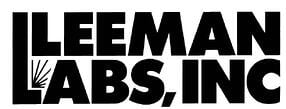 In 1981 John R. Leeman and Karl Hildebrand founded Leeman Labs to produce analytical instrumentation based on the promise of Inductively Coupled Plasma-Atomic Emission Spectroscopy (ICP-AES) [also referred to as Inductively Coupled Plasma-Optical Emission Spectroscopy (ICP-OES)] to identify and quantify the concentration of elements within a sample.
In 1981 John R. Leeman and Karl Hildebrand founded Leeman Labs to produce analytical instrumentation based on the promise of Inductively Coupled Plasma-Atomic Emission Spectroscopy (ICP-AES) [also referred to as Inductively Coupled Plasma-Optical Emission Spectroscopy (ICP-OES)] to identify and quantify the concentration of elements within a sample.
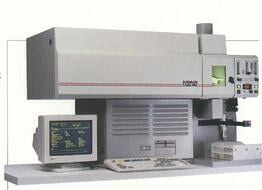 This initial success established Leeman Labs as both an innovator and an expert in ICP-OES and lead the company to endeavor into other realms of atomic spectroscopy adding the DC Arc technique and Mercury Analysis to its line of analytical instrumentation. In 2004 Leeman Labs was acquired by Teledyne technologies to augment Teledyne's existing laboratory and continuous monitoring instruments used in environmental applications, and complement Teledyne Tekmar's organic analysis instrumentation.
This initial success established Leeman Labs as both an innovator and an expert in ICP-OES and lead the company to endeavor into other realms of atomic spectroscopy adding the DC Arc technique and Mercury Analysis to its line of analytical instrumentation. In 2004 Leeman Labs was acquired by Teledyne technologies to augment Teledyne's existing laboratory and continuous monitoring instruments used in environmental applications, and complement Teledyne Tekmar's organic analysis instrumentation.
Today, its instruments can be found conducting analyses across a broad spectrum of industries and sample types. The usefulness of Teledyne Leeman Lab’s elemental analysis instrumentation ranges from agriculture to aerospace and forensics to food in over 50 countries.
The history of Teledyne Leeman Labs is filled with “firsts” in Atomic Spectroscopy. But the past is not only about revolutionary moments, it is also about refinement. It’s easy to discern from the timeline of Teledyne Leeman Labs historic milestones, that we have always maintained a balance of innovation and refinement. Over the years the path to excellence in atomic spectroscopy has always led to Teledyne Leeman Labs, and still does.
Timeline
 1981 - Leeman Labs is founded by John R. Leeman and Karl J. Hildebrand with the intention of producing analytical instrumentation based on new technological advancements in ICP-AES.
1981 - Leeman Labs is founded by John R. Leeman and Karl J. Hildebrand with the intention of producing analytical instrumentation based on new technological advancements in ICP-AES.- 1981 - With a vision for a new optical spectrometer based on Echelle grating technology, Leeman Labs was incorporated, and began the process of building its first ICP-OES spectrometer.
- 1981 - Patent of a unique method of wavelength selection involving moving the detector and exit slit in the focal plane of the spectrometer. Early ICPs were based on the Paschen-Rünge optical design which consisted of a permanently mounted diffraction grating, and fixed entrance and exit slits. This new design provided wavelength versatility, as well as significant improvements in speed, precision and accuracy (especially at low concentration and/ or in samples with complex matrices).
- 1981 - Introduction of the first Echelle Grating Spectrometer. This early offering from Leeman Labs demonstrated that currently available instruments had not realized the potentials that lay within current ICP-OES technologies. Many early systems were designed for other applications, such as atomic absorption and arc/spark spectroscopy. The innovative Echelle grating spectrometer exhibited major improvements in light dispersion, optical resolution and energy throughput. The Echelle grating, when combined with Inductively Coupled Plasma (ICP), amounted to significant improvements in analytical performance.
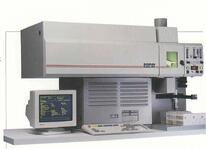 1983 - Leeman develops the first benchtop ICP, The Plasma-Spec. This instrument represented an unflinching departure from the conventional optical systems used in atomic spectroscopy. It was the first ICP to use an Echelle optical system, which gave it the highest resolution and dispersion of any commercially available ICP. It is interesting to note that today most ICP manufacturers have abandoned the more classical spectrometer designs in favor of Echelle-based systems similar to Leeman Labs first offering.
1983 - Leeman develops the first benchtop ICP, The Plasma-Spec. This instrument represented an unflinching departure from the conventional optical systems used in atomic spectroscopy. It was the first ICP to use an Echelle optical system, which gave it the highest resolution and dispersion of any commercially available ICP. It is interesting to note that today most ICP manufacturers have abandoned the more classical spectrometer designs in favor of Echelle-based systems similar to Leeman Labs first offering.- 1986 - The Hildebrand Nebulizer, designed to resist clogging by solutions containing high levels of dissolved solids is introduced. Because this nebulizer produces a very fine, uniform aerosol, it yielded significant improvements in limits of detection and higher precision.
- 1987 - The "Flagg Oscillator", the first 40 MHz Free Running Oscillator, was introduced. The oscillator was a highly efficient, user-friendly ICP source. This ICP generator simplified the plasma ignition process and had very high-speed impedance mismatching capability. This simplified operation when analyzing complex matrices such as organic solvents.
- 1987 - The Plasma-Pure Standards Product Line is introduced, including single and custom multi-element inorganic standards for the analytical marketplace.
- 1989 - The second generation Echelle-based ICP, the PS Series (1000, 2000, and 3000) is introduced. The PS series was available in automated sequential, simultaneous, or combination Sim/Seq Echelle-based ICP. After years of continual ICP refinement the PS Series was an impressive milestone, possessing fully automated control of all operating parameters.
 1991 - The first Fully Automated Mercury Analyzer, the PS 200, is introduced. Leeman Labs was the first U.S. manufacturer to develop systems that automate the labor-intensive analytical techniques used for mercury analysis. The combination of sample handling and analysis in a single automated system improved productivity, precision, and accuracy for thousands of laboratories.
1991 - The first Fully Automated Mercury Analyzer, the PS 200, is introduced. Leeman Labs was the first U.S. manufacturer to develop systems that automate the labor-intensive analytical techniques used for mercury analysis. The combination of sample handling and analysis in a single automated system improved productivity, precision, and accuracy for thousands of laboratories.- 1992 - The first Automated Mercury Sample Preparation System, the AP 200, is introduced. The AP 200 automated all aspects of Mercury Analysis sample preparation. This automation reduced the time and labor associated with sample preparation, and eliminated the uncertainty associated with missed spikes and/or reagent additions.
 1992 - The first Automated Cyanide Analysis System, the PS 1214, is introduced. Leeman Labs was the first U.S. manufacturer to develop an automated system for the labor-intensive analytical techniques used for cyanide analysis. The PS 1214 combined sample handling and sample analysis into a single automated instrument.
1992 - The first Automated Cyanide Analysis System, the PS 1214, is introduced. Leeman Labs was the first U.S. manufacturer to develop an automated system for the labor-intensive analytical techniques used for cyanide analysis. The PS 1214 combined sample handling and sample analysis into a single automated instrument.- 1993 - The first Transportable ICP, the PS-Series Mobile, was introduced for efficient, on-site analysis. The PS-Series Mobile was engineered to withstand the rigors of in-field operation, without sacrificing laboratory quality data. The benefits of a transportable ICP included onsite analysis on both land and at sea, rapid results to guide site characterization and/or remediation efforts, rapid metals analysis at the research site, pollution source, or spill site.
- 1994 - Leeman Labs purchased Glow Discharge technology from the Analyte Corporation. The Analyte 16, which incorporated this new technology, was first introduced by Analyte Corporation of Medford, Oregon, and was developed using a new optical spectroscopy technique called AtomSource Atomic Absorption. The technique, based on Glow Discharge, was a major breakthrough in optical spectroscopy for the direct analysis of solid samples by Atomic Absorption (AA).1994 - Introduction of the first Data Acquisition System for ICP-OES with unlimited autoranging capability. This advancement matched the data system to the capability of the ICP.
- 1994 - Developed the first unique RF drive electronics capable of boosting the output of hollow cathode lamps. This resulted in both high-light flux and longer lamp life.
- 1996 - Introduction of the Direct Reading Echelle (DRE) ICP Detection System. In addition to the features of its predecessors, the DRE ICP could be configured in any viewing mode (i.e., radial, axial or dual view) for superior analytical performance and significant minimization of interferences.
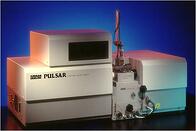 1998 - Introduction of the Pulsar Metal Alloy Analyzer. The Pulsar was developed to overcome limitations found in conventional metal analysis instruments. This system combined the strengths of Arc, Spark, XRF, and Combustion Analyzers, in a single analytical instrument.
1998 - Introduction of the Pulsar Metal Alloy Analyzer. The Pulsar was developed to overcome limitations found in conventional metal analysis instruments. This system combined the strengths of Arc, Spark, XRF, and Combustion Analyzers, in a single analytical instrument.- 1999 - Introduction of the WinICP instrument control software package. WinICP was designed to simplify operation and broaden the analytical capability of Leeman Lab’s ICP products. WinICP was compatible with the most current windows operating systems at that time.
- 2000 - Introduction of the WinHg instrument control software package. WinHg applied the same benefits and compatibility of the WinICP instrument control software to Leeman Lab’s Mercury Analysis products.
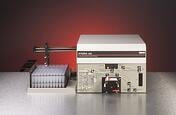 2000 - Introduced the Hydra Series of Automated Mercury Analyzers. The system was built around an innovative “integrated modular” design that allowed the systems to be easily reconfigured in the lab to perform a variety of mercury analysis techniques including Cold Vapor Atomic Absorption (CVAA) and Cold Vapor Atomic Fluorescence (CVAF).
2000 - Introduced the Hydra Series of Automated Mercury Analyzers. The system was built around an innovative “integrated modular” design that allowed the systems to be easily reconfigured in the lab to perform a variety of mercury analysis techniques including Cold Vapor Atomic Absorption (CVAA) and Cold Vapor Atomic Fluorescence (CVAF).- 2002 -Leeman Lab's first solid state ICP detector system introduced. The Prodigy ICP was considered a high end ICP-OES with halogen capability.
- 2004 - The introduction of the UP266 MACRO Laser Ablation System. Laser ablation was first investigated in the early 1960s and explored further 25 yrs later using ICP-MS. Teledyne Leeman Labs specifically designed this system for use with both ICP-OES and ICP-MS. UP266 MACRO offers a wide variety of ablation methods such as spot ablation for depth profiling, line scanning for lateral analysis and raster scanning for bulk analysis.
 2004 - Leeman Labs is acquired by Teledyne Technologies. Teledyne Technology’s far reaching network of technologically-based companies, many specializing in laboratory instrumentation for measurement and analysis, complements Leeman Lab’s strong foundation in Atomic Spectroscopy and increases the scope of technologies it will be able to produce in the future.
2004 - Leeman Labs is acquired by Teledyne Technologies. Teledyne Technology’s far reaching network of technologically-based companies, many specializing in laboratory instrumentation for measurement and analysis, complements Leeman Lab’s strong foundation in Atomic Spectroscopy and increases the scope of technologies it will be able to produce in the future.- 2005 - Prodigy XP ICP was introduced. The Prodigy XP accomplished a shorter wavelength range.
- 2006 - Introduction of the Prodigy-H ICP. The Prodigy H permitted the measurement of halogen elements as well as more routine metal analysis. Historically, the determination of halogen elements required alternative analytical techniques such as ion chromatography or ion selective electrodes. This new frontier was made possible due to advancements in ICP-OES spectrometer and detector designs resulting in increased wavelength sensitivity.
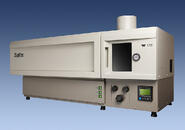 2006 - Teledyne Leeman Labs adds Time Resolved Analysis (TRA), broadening its instrument capabilities. Both the Prodigy ICP and Prodigy DC Arc incorporated modes giving them the ability to acquire elemental data on an intensity versus time basis. Applications include element specific chromatographic separations (e.g., differentiating between Cr, Cr III and Cr VI) and spatially resolved laser ablation experiments (e.g., depth profiling and/or linear traverses across a sample).
2006 - Teledyne Leeman Labs adds Time Resolved Analysis (TRA), broadening its instrument capabilities. Both the Prodigy ICP and Prodigy DC Arc incorporated modes giving them the ability to acquire elemental data on an intensity versus time basis. Applications include element specific chromatographic separations (e.g., differentiating between Cr, Cr III and Cr VI) and spatially resolved laser ablation experiments (e.g., depth profiling and/or linear traverses across a sample).- 2009 - Introduction of the Hydra II Mercury Analyzer series. Building on the strengths of the original Hydra series, this versatile product line currently includes:
 The Hydra II AA - A fully automated Mercury Analyzer based on the traditional Cold Vapor Atomic Absorption (CVAA) technique to address a host of applications such as mercury in soils, sludge, tissues, blood, wastewaters, drinking waters, and more. The Hydra AA typically yields limits of detection in the 1 to 2 ppt range.
The Hydra II AA - A fully automated Mercury Analyzer based on the traditional Cold Vapor Atomic Absorption (CVAA) technique to address a host of applications such as mercury in soils, sludge, tissues, blood, wastewaters, drinking waters, and more. The Hydra AA typically yields limits of detection in the 1 to 2 ppt range.- The Hydra IIAF and Hydra IIAF Gold - A Mercury Analyzer based on the Cold Vapor Atomic Fluorescence (CVAF) technique and available in 2 models (AF, and AF Gold). The Hydra IIAF series is the ultimate in trace level mercury detection with sensitivity in the sub
ppt levels. - The Hydra IIC - A fully automated Mercury Analyzer that is capable of measuring mercury in solid and semi-solid sample matrices without acid digestion. The Hydra IIC uses sample combustion (thermal decomposition), mercury concentration via gold amalgamation, and detection by Cold Vapor Atomic Absorption (CVAA). The Hydra IIC has the unique advantage of eliminating the sample preparation and hazardous waste associated with conventional mercury techniques.
- 2009 - The DC Arc Spectrometer is developed in response to customer request. Teledyne Leeman Labs developed the DC Arc instrument to offer fast, quantitative, elemental analyses of difficult samples. The hallmark of the DC Arc technique is the ability to analyze samples that are difficult or impossible to digest. With high sensitivity and simple operation, the DC Arc is capable of performing elemental analysis of samples in their native form without sample digestion.
 2013 - Introduction of the Prodigy7 ICP-OES. The Prodigy7 offers distinct advantages over other ICPS with features such as: CMOS Array Detector for true simultaneous measurement, full wavelength coverage, Full Spectral Access and compact design.
2013 - Introduction of the Prodigy7 ICP-OES. The Prodigy7 offers distinct advantages over other ICPS with features such as: CMOS Array Detector for true simultaneous measurement, full wavelength coverage, Full Spectral Access and compact design.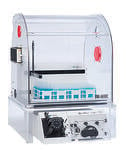 2014 - Teledyne CETAC QuickTrace Mercury Analyzers become part of Teledyne Leeman Labs Mercury family.
2014 - Teledyne CETAC QuickTrace Mercury Analyzers become part of Teledyne Leeman Labs Mercury family.

 The Hydra II AA - A fully automated Mercury Analyzer based on the traditional Cold Vapor Atomic Absorption (CVAA) technique to address a host of applications such as mercury in soils, sludge, tissues, blood, wastewaters, drinking waters, and more. The Hydra AA typically yields limits of detection in the 1 to 2 ppt range.
The Hydra II AA - A fully automated Mercury Analyzer based on the traditional Cold Vapor Atomic Absorption (CVAA) technique to address a host of applications such as mercury in soils, sludge, tissues, blood, wastewaters, drinking waters, and more. The Hydra AA typically yields limits of detection in the 1 to 2 ppt range.